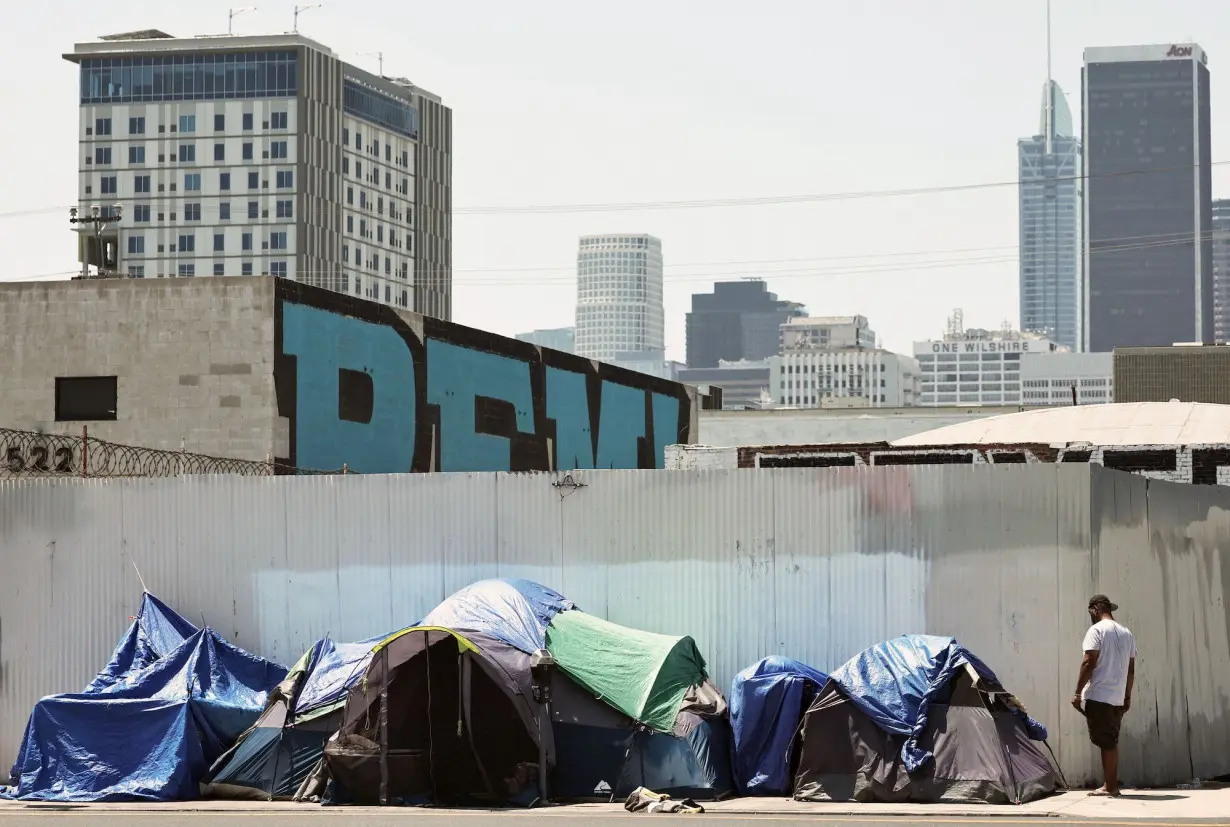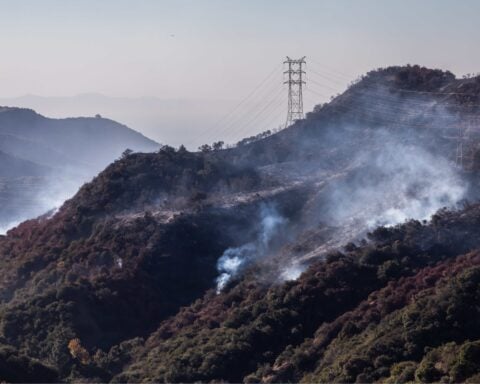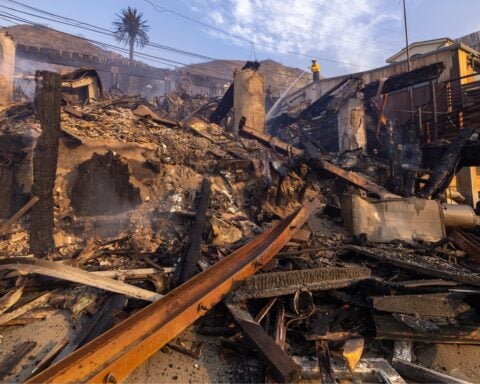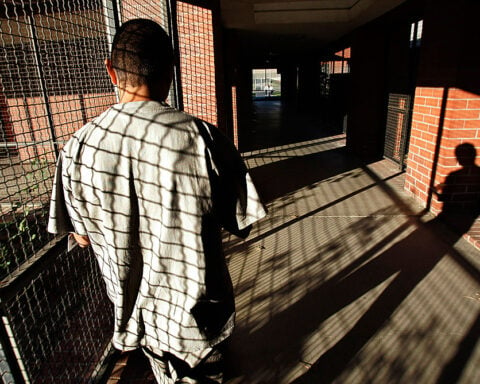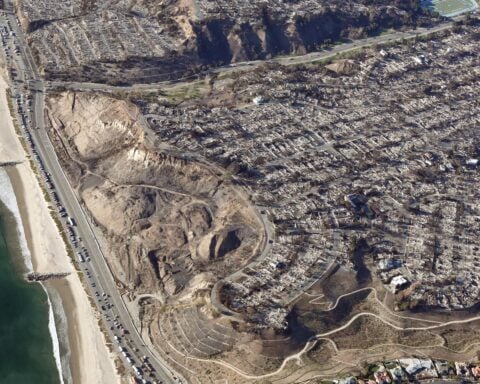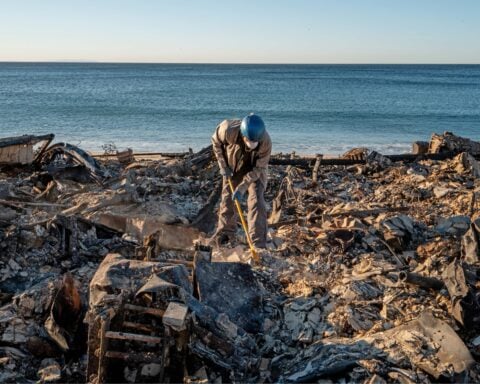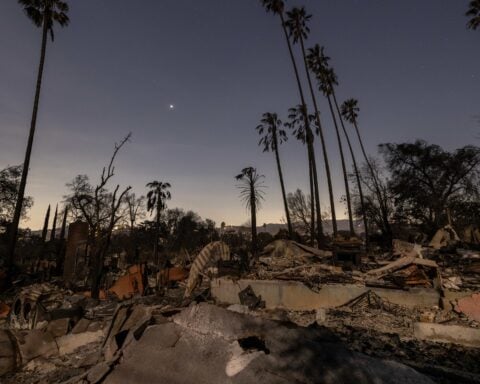(CNN) — California Gov. Gavin Newsom on Thursday issued an executive order directing officials in the state with the nation’s largest homeless population to start removing homeless encampments – a move met with outrage from homeless advocates and elected officials.
The Democratic governor’s order came on the heels of a US Supreme Court decision last month that ruled in favor of an Oregon city that ticketed homeless people for sleeping outside. The order calls on state officials “to adopt humane and dignified policies to urgently address encampments on state property.”
“This executive order directs state agencies to move urgently to address dangerous encampments while supporting and assisting the individuals living in them – and provides guidance for cities and counties to do the same,” Newson said in a statement. “There are simply no more excuses. It’s time for everyone to do their part.”
California has the largest homeless population in the nation, with more than 180,000 of the estimated 653,000 people experiencing homelessness nationwide residing in the Golden State, according to a 2023 report to Congress from the US Department of Housing and Urban Development.
Here’s what we know about the executive order, along with reactions from state officials and homelessness advocates:
SCOTUS decision allows states to confine and arrest homeless, advocate says
Newsom’s executive order was buoyed by the US Supreme Court’s decision last month, which rejected arguments that ticketing homeless people for sleeping outside violates the Constitution’s ban on “cruel and unusual” punishment.
The case centered on “anti-camping” ordinances in Grants Pass, Oregon, that were challenged by several residents experiencing homelessness.
The Eigth Amendment “does not authorize federal judges to wrest those rights and responsibilities from the American people and in their place dictate this Nation’s homelessness policy,” Gorsuch wrote in his opinion for the 6-3 conservative majority. The three liberal justices dissented, with Justice Sonia Sotomayor writing that the ruling “punishes (people) for being homeless.”
The case was the most significant appeal involving homeless Americans to reach the Supreme Court in decades, and was closely watched by cities and states across the nation wrestling with a sharp increase in homelessness.
Newsom last month praised the high court’s ruling, saying it “provides state and local officials the definitive authority to implement and enforce policies to clear unsafe encampments from our streets.”
Chris Herring, an assistant professor of sociology at the University of California Los Angeles, said Newsom “could have issued this order” before the high court’s decision.
“The only difference now is that states and localities are free to confine and arrest people even when there is no shelter available,” Herring said.
“Before the Supreme Court ruling, cities were in the position where they would have to provide shelter offers before removing encampments,” he said. “Now … they will be able to carry out these encampment sweeps with the very real threat of issuing people incredibly expensive fines of which people cannot pay and often results in a warrant or an arrest or can result in incarceration.”
Herring said the timing of the order wasn’t surprising as Newsom seeks to “politically clear his name of the homeless crisis, especially as he’s in the national spotlight right now amid the presidential election.”
What does the governor’s order say?
The governor’s order directs, but does not mandate, state agencies and departments to adopt “policies and plans consistent” with the existing encampment policy of the state’s Department of Transportation (Caltrans).
Caltrans provides “advance notice of clearance and works with local service providers to support those experiencing homelessness at the encampment, and stores personal property collected at the site” for at least 60 days, Newsom’s office said in a news release.
In his order, Newsom encouraged local governments to follow this policy and use resources funded by his investments in housing and intervention programs to remove encampments – prioritizing those that pose the greatest danger to those living in and around them.
It also directs the state’s Interagency Council on Homelessness to “develop guidance and provide technical assistance” to local governments.
The state invested over $24 billion in funding to assist local jurisdictions “in providing services and wrap-around support” to people living in encampments to address the housing crisis, the news release added. The governor’s office also urged local governments to apply for grant funding to “expand the behavioral health continuum and provide appropriate care to individuals experiencing mental health conditions and substance use disorders.”
‘Where do you expect people to go?’
Michael Weinstein, president of the AIDS Healthcare Foundation, the parent organization of the Housing is a Human Right initiative, accused Newsom of “criminalizing poverty” and “doubling down on failed policies.”
“Governor Newsom, where do you expect people to go? This is a shameful moment in California history,” Weinstein said in a statement Thursday.
Jennifer Friedenbach, executive director of the Coalition on Homelessness in San Francisco, called Newsom’s executive order “a punch in the gut.”
She said there are already thousands of people on a waitlist for housing, and all shelter beds in San Francisco are already full. Roughly 8,000 people are homeless every night in the city, which has 3,300 occupied shelter beds, Friedenbach told CNN.
“The governor is saying they want to crack down on folks who have no other choice – obviously they wouldn’t be out there if they had somewhere else to be,” she said, adding there isn’t a system in place that is “matching the need.”
Friedenbach cited examples to illustrate the challenges homeless people already face in the state, including women experiencing homelessness who can’t get into women-only shelters or disabled people who have to forego a shelter bed due to lack of accessibility.
People who are living in encampments have “nowhere to go” when they are cleared, Friedenbach said. “They lose their belongings, they face increased morbidity, they lose their paperwork making it harder to get services, they lose their access to social workers,” she continued. “These kinds of efforts exacerbate homelessness.”
Tescia Uribe, who works with the statewide nonprofit organization PATH that seeks to end homelessness in the state, told CNN the order “doesn’t force anyone to do anything they haven’t already been doing or want to do. It comes with no dollars, nothing to provide permanent solutions for people,” she said.
The state, Uribe added, is continuing the practice of investing resources “into just moving people from one place to another.”
Encampment clearing efforts do not lower homeless population, study shows
Los Angeles Mayor Karen Bass was also among those pushing back against Newsom’s order, saying: “Strategies that just move people along from one neighborhood to the next or give citations instead of housing do not work.”
A study published this month by the Rand Corp’s Center on Housing and Homelessness found encampment clearing efforts in Los Angeles had no long-term effect on the number of people on the streets.
The researchers looked at encampment cleanups in Venice, Hollywood and Skid Row in Los Angeles and “observed temporary declines in the unsheltered population that lasted two to three months on average” before returning to previous levels, the study said.
“For the first time in years, unsheltered homelessness has decreased in Los Angeles because of a comprehensive approach that leads with housing and services, not criminalization,” said Bass. “We thank the Governor for his partnership thus far and hope that he will continue collaboration on strategies that work.”
But in San Francisco, a spokesperson for Mayor London Breed said Thursday the city had already started to take action to clear encampments.
“Our city encampment teams and street outreach staff have been going out every day to bring people indoors, and to clean and clear encampments,” spokesperson Parisa Safarzadeh said in a statement. “This is why we are seeing a five year low in the City’s tent count on our streets.”
The city’s police department told CNN plans for how to clear encampments are still being developed, but will involve a coalition of partners, including the San Francisco Department of Public Health, nonprofit partners, and the San Francisco Department of Homelessness and Supportive Housing.
CLARIFICATION: This story has been updated to clarify a quote by Tescia Uribe of the nonprofit organization PATH about the investment of resources for the unhoused.
The-CNN-Wire
™ & © 2024 Cable News Network, Inc., a Warner Bros. Discovery Company. All rights reserved.

 Civitas Resources weighs sale of DJ Basin assets, Bloomberg News reports
Civitas Resources weighs sale of DJ Basin assets, Bloomberg News reports
 Biden's late moves on China, Russia, AI may mostly boost Trump
Biden's late moves on China, Russia, AI may mostly boost Trump
 17-year-old star student-athlete shot and killed on the way to school
17-year-old star student-athlete shot and killed on the way to school
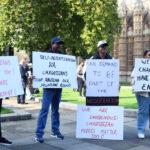 Britain gives Trump team chance to review Chagos Islands deal
Britain gives Trump team chance to review Chagos Islands deal
 Coco Gauff is into the Australian Open's 3rd round and still unbeaten in 2025
Coco Gauff is into the Australian Open's 3rd round and still unbeaten in 2025
 Dec CPI rises a touch above expectations, keeps Fed on track
Dec CPI rises a touch above expectations, keeps Fed on track
 Lady Vols coach Kim Caldwell about to experience another 1st with her baby due any day
Lady Vols coach Kim Caldwell about to experience another 1st with her baby due any day
